
Entertainment
-
 DiscoverEU marks 40 years of Schengen with 40,000 free travel passes for young Europeans
The European Commission is celebrating the 40th anniversary of the Schengen Area by offering 40,000 young Europeans the chance to explore the continent through DiscoverEU, part of the31 October 2025Read More...
DiscoverEU marks 40 years of Schengen with 40,000 free travel passes for young Europeans
The European Commission is celebrating the 40th anniversary of the Schengen Area by offering 40,000 young Europeans the chance to explore the continent through DiscoverEU, part of the31 October 2025Read More... -
 Brussels universities to award honorary doctorates to Stromae, Lize Spit, and Amélie Nothomb
The Vrije Universiteit Brussel (VUB) announced on Monday that Stromae, Lize Spit, Amélie Nothomb, François Schuiten, and Ever Meulen will receive joint honorary doctorates from VUB and27 October 2025Read More...
Brussels universities to award honorary doctorates to Stromae, Lize Spit, and Amélie Nothomb
The Vrije Universiteit Brussel (VUB) announced on Monday that Stromae, Lize Spit, Amélie Nothomb, François Schuiten, and Ever Meulen will receive joint honorary doctorates from VUB and27 October 2025Read More... -
 Stolen Renaissance masterpiece returns to Italy after 52 years
After more than half a century, a stolen Renaissance painting has finally returned home to Italy. *Madonna with Child*, a tempera-on-wood masterpiece by Venetian painter Antonio Solario,31 July 2025Read More...
Stolen Renaissance masterpiece returns to Italy after 52 years
After more than half a century, a stolen Renaissance painting has finally returned home to Italy. *Madonna with Child*, a tempera-on-wood masterpiece by Venetian painter Antonio Solario,31 July 2025Read More... -
 Belgian seaside resorts: highlights of royal De Panne
While Ostend is often dubbed the queen of Belgium’s seaside resorts, the country’s coastline offers many other gems worth discovering. In this series, Belga English explores four distinctive20 July 2025Read More...
Belgian seaside resorts: highlights of royal De Panne
While Ostend is often dubbed the queen of Belgium’s seaside resorts, the country’s coastline offers many other gems worth discovering. In this series, Belga English explores four distinctive20 July 2025Read More... -
 Louis Vuitton named suspect in Dutch money laundering probe
Luxury fashion house Louis Vuitton has been named a suspect in a Dutch money laundering investigation, according to the Dutch Public Prosecution Service (OM). The OM alleges that18 July 2025Read More...
Louis Vuitton named suspect in Dutch money laundering probe
Luxury fashion house Louis Vuitton has been named a suspect in a Dutch money laundering investigation, according to the Dutch Public Prosecution Service (OM). The OM alleges that18 July 2025Read More... -
 Brussels tops global rankings for international meetings as tourism soars to new heights
Brussels has once again secured its position as the world’s top city for international meetings, according to the latest annual report from the Union of International Associations (UIA).26 June 2025Read More...
Brussels tops global rankings for international meetings as tourism soars to new heights
Brussels has once again secured its position as the world’s top city for international meetings, according to the latest annual report from the Union of International Associations (UIA).26 June 2025Read More... -
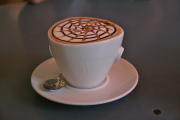 Coffee prices keep climbing in Czech establishments
The cost of a cup of coffee in Czech restaurants and cafés has increased by 4% over the past year, now averaging CZK 57.80, according to data from the Dotykačka point-of-sale system.15 June 2025Read More...
Coffee prices keep climbing in Czech establishments
The cost of a cup of coffee in Czech restaurants and cafés has increased by 4% over the past year, now averaging CZK 57.80, according to data from the Dotykačka point-of-sale system.15 June 2025Read More...
Politics
-
 MEPs push for a “military Schengen” to counter potential Russian threat
The European Parliament has thrown its support behind plans to create a “military Schengen” – a system that would allow troops and military equipment to move freely across EU borders.Read More...
MEPs push for a “military Schengen” to counter potential Russian threat
The European Parliament has thrown its support behind plans to create a “military Schengen” – a system that would allow troops and military equipment to move freely across EU borders.Read More... -
 France’s former President Sarkozy to begin appeal trial over Libyan Funding allegations
Former French President Nicolas Sarkozy is set to appear in a Paris court on March 16 for the start of his appeal trial over allegations of illegal campaignRead More...
France’s former President Sarkozy to begin appeal trial over Libyan Funding allegations
Former French President Nicolas Sarkozy is set to appear in a Paris court on March 16 for the start of his appeal trial over allegations of illegal campaignRead More... -
 French parliament poised to halt Macron’s pension reform amid budget Turmoil
French lawmakers are expected to vote Wednesday to suspend President Emmanuel Macron’s controversial pension reform, as the government battles to push next year’s budget through aRead More...
French parliament poised to halt Macron’s pension reform amid budget Turmoil
French lawmakers are expected to vote Wednesday to suspend President Emmanuel Macron’s controversial pension reform, as the government battles to push next year’s budget through aRead More... -
 Ex-minister Ziobro rejects corruption allegations, labels case political
Former Polish justice minister Zbigniew Ziobro vowed on Saturday to pursue “legal and political” action after parliament voted to lift his immunity, clearing the way for prosecutors to bringRead More...
Ex-minister Ziobro rejects corruption allegations, labels case political
Former Polish justice minister Zbigniew Ziobro vowed on Saturday to pursue “legal and political” action after parliament voted to lift his immunity, clearing the way for prosecutors to bringRead More... -
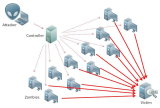 Pro-Russian hackers briefly disrupt Belgian Telecom websites in DDoS attack
A wave of DDoS attacks briefly disrupted the websites of Belgian telecom operators Proximus and Scarlet on Wednesday morning, with the pro-Russian hacker group NoName057 claimingRead More...
Pro-Russian hackers briefly disrupt Belgian Telecom websites in DDoS attack
A wave of DDoS attacks briefly disrupted the websites of Belgian telecom operators Proximus and Scarlet on Wednesday morning, with the pro-Russian hacker group NoName057 claimingRead More...
News
-
 EU must build over 2 million homes annually by 2035 to avert housing crisis, new data shows
The European Union will need to build more than two million new homes every year until 2035 to keep up with soaring demand, according to new projections released by the EuropeanRead More...
EU must build over 2 million homes annually by 2035 to avert housing crisis, new data shows
The European Union will need to build more than two million new homes every year until 2035 to keep up with soaring demand, according to new projections released by the EuropeanRead More... -
 Police raid homes and offices of French Culture Minister Rachida Dati in corruption probe
French police searched Culture Minister Rachida Dati’s home and offices on Thursday as part of a widening corruption investigation linked to her tenure as a European Parliament lawmaker,Read More...
Police raid homes and offices of French Culture Minister Rachida Dati in corruption probe
French police searched Culture Minister Rachida Dati’s home and offices on Thursday as part of a widening corruption investigation linked to her tenure as a European Parliament lawmaker,Read More... -
 White Christmas unlikely in Switzerland, MeteoSwiss says
The chances of a white Christmas in Switzerland are slim, with snowfall in the lowlands virtually ruled out, according to the Federal Office of Meteorology and Climatology (MeteoSwiss).Read More...
White Christmas unlikely in Switzerland, MeteoSwiss says
The chances of a white Christmas in Switzerland are slim, with snowfall in the lowlands virtually ruled out, according to the Federal Office of Meteorology and Climatology (MeteoSwiss).Read More... -
 Guy Parmelin elected Swiss President for 2026 with record-breaking vote
Economics Minister Guy Parmelin will serve as President of the Swiss Confederation in 2026, securing the office with a result that sets a new benchmark for the current millennium.Read More...
Guy Parmelin elected Swiss President for 2026 with record-breaking vote
Economics Minister Guy Parmelin will serve as President of the Swiss Confederation in 2026, securing the office with a result that sets a new benchmark for the current millennium.Read More... -
 Nigeria seeks French support to tackle insecurity, Macron says
Nigerian President Bola Tinubu has requested increased support from France to combat escalating insecurity in the country’s north, French President Emmanuel Macron said on Sunday,Read More...
Nigeria seeks French support to tackle insecurity, Macron says
Nigerian President Bola Tinubu has requested increased support from France to combat escalating insecurity in the country’s north, French President Emmanuel Macron said on Sunday,Read More... -
 Swiss army has “gone back to sleep,” says departing chief
Switzerland briefly awakened to the urgency of national defence following Russia’s 2022 invasion of Ukraine — but has since drifted back into complacency, outgoingRead More...
Swiss army has “gone back to sleep,” says departing chief
Switzerland briefly awakened to the urgency of national defence following Russia’s 2022 invasion of Ukraine — but has since drifted back into complacency, outgoingRead More... -
 Poland and Germany to seal new defence pact in 2026, leaders announce
Polish Prime Minister Donald Tusk and German Chancellor Friedrich Merz said on Monday that their governments plan to sign a new bilateral defence agreement nextRead More...
Poland and Germany to seal new defence pact in 2026, leaders announce
Polish Prime Minister Donald Tusk and German Chancellor Friedrich Merz said on Monday that their governments plan to sign a new bilateral defence agreement nextRead More... -
 Monegasque Language Committee resumes its work
Following the publication of Sovereign Ordinance No. 11,219 on 7 May 2025, which appointed the members of the Monegasque Language Committee, the group has officially reconvened atRead More...
Monegasque Language Committee resumes its work
Following the publication of Sovereign Ordinance No. 11,219 on 7 May 2025, which appointed the members of the Monegasque Language Committee, the group has officially reconvened atRead More...

Most Read
- Teen held after US woman killed in London stabbings
- Football: Farhad Moshiri adamant Everton deal above board
- Greece hails new post-bailout chapter but concerns remain
- The Kokorev case caused wide discussion in Brussels
- EU accession talks stir debate in Moldova: insights from Gagauzia's leader, Yevgenia Gutsul
Economics

A German man stabbed to death one person and slashed three more Tuesday in what authorities said may have been an Islamist attack, without ruling out that the assailant suffered mental problems.
Police said they had arrested a 27-year-old German national who knifed four people around 5:00am (0300 GMT) at the commuter railway station of the small town of Grafing, east of Munich.
One of the victims, a 50-year-old man, later died of his wounds in hospital. The others injured were men aged 43, 55 and 58. One of the victims was seriously hurt, the other two more lightly wounded.
The "assailant made remarks at the scene of the crime that indicate a political motive -- apparently an Islamist motive," said Ken Heidenreich, spokesman for the prosecutor's office. "We are still determining what the exact remarks were."
Local media reported witnesses as saying the man had yelled "Allahu akbar" (God is greatest) and "you unbelievers" during the attack.
If a jihadist motive is confirmed, it would be the country's third Islamist-linked knife attack since September, but police were also investigating whether the assailant had previous psychological or drug problems.

Prime Minister Shinzo Abe said on Thursday that "drastic fluctuations" in the yen's value risked having a major impact on the trade prospects of Japanese companies.
Abe said the current situation was "not desirable", during a visit to London.
The yen surged to an 18-month high against the dollar after the Bank of Japan (BoJ) decided last week not to unveil any fresh stimulus.
On Thursday afternoon, the dollar was at 107.13 yen, still way down from above 111 yen before the BoJ announcement.
A strong currency is damaging for Japan's exporting giants, such as Toyota and Sony, as it makes their goods more expensive overseas and shrinks the value of repatriated profits.

US President Barack Obama plunged into Britain's increasingly poisonous EU debate on Friday with a powerful warning against Brexit, arguing that US soldiers had laid down their lives for Europe.
Obama's rare foray into the domestic politics of another country comes ahead of Britain's EU membership referendum in June and drew a furious response from eurosceptics like London Mayor Boris Johnson.
Writing in the Daily Telegraph, a traditional bastion of euroscepticism, Obama argued that Britain's place in the European Union magnified its global influence and invoked the memory of US troops who died in two world wars.
"I realise that there's been considerable speculation -- and some controversy -- about the timing of my visit," he wrote in a piece published at the start of his four-day trip to Britain.
"I will say, with the candour of a friend, that the outcome of your decision is a matter of deep interest to the United States.
"Tens of thousands of Americans who rest in Europe's cemeteries are a silent testament to just how intertwined our prosperity and security truly are.

Stock markets rebounded in Europe on Friday but some stumbled in Asia, capping a volatile week as investors' concerns grow about the health of the global economy.
At around 1330 GMT, London's benchmark FTSE 100 index was up 0.9 percent compared with Thursday's close, aided by rising oil prices.
"There was a continued chirpiness to the global markets..., the FTSE even managing to hold onto its growth despite a woeful morning for UK data," said Spreadex analyst Connor Campbell, citing poor official manufacturing and trade figures.
In the eurozone, both Frankfurt's DAX 30 and the Paris CAC 40 rose by more than one percent in afternoon deals.
"The main catalyst for this growth seems to have been the strong German trade surplus figures," added Campbell, noting that dealers had "quickly forgotten" disappointing French industrial output data.
Rising oil prices also boosted Wall Street stocks which opened higher on Friday with the Dow Jones Industrial Average gaining 0.5 percent to stand at 17,633.94 points five minutes into trade.
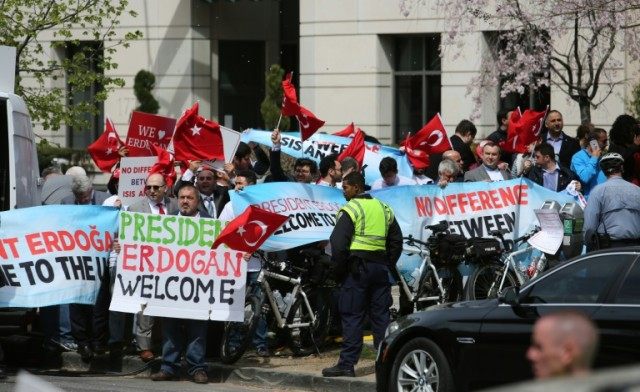
The White House said that US President Barack Obama met his Turkish counterpart in Washington, amid tensions over human rights and the crisis in Syria.

An eight-year-old French police dog was on Tuesday awarded a medal of honour for his exceptional sniffing skills, which netted authorities 7.5 million euros ($8.4 million) in drugs.
"There are good police officers in Marseille, but it seems this one is the best," said Pierre-Marie Bourniquel, the police chief for the area, as he decorated the dog.
The Belgian Shepherd, named Choc (Shock), sat quietly, tongue out and tail wagging, as the French national anthem was played and the medal for "bravery and devotion" placed around his neck.

A string of explosions rocked Brussels airport and a city metro station on Tuesday, killing at least 13 people, according to media reports, as Belgium raised its terror threat to the maximum level.
Two explosions targeted the main hall of Zaventem Airport at around 8:00 am (0700 GMT), with a third hitting the Maalbeek metro station, near the European Union's main buildings, just as commuters were making their way to work in rush hour.
Belgian media reports said at least 13 people had been killed and 35 injured at the airport, while an AFP reporter said at least 15 people with bloodied faces were being treated by emergency services outside the metro station.
The blasts come days after the dramatic arrest in Brussels on Friday of Salah Abdeslam, the prime suspect in the Paris terror attacks that killed 130 people in November, after four months on the run.
There were chaotic scenes at the airport as passengers fled in panic, with a thick plume of smoke rising from the main terminal building.
The blasts smashed the windows of the departure hall and sent ceiling tiles shattering to the floor.

An experimental vaccine against dengue, the world's most common mosquito-borne virus, was 100 percent effective in early trials and could speed up the pace of a vaccine against Zika, researchers said Wednesday.
Dengue -- which is in the same family of flaviviruses as Zika -- infects some 390 million people each year in more than 120 countries of the world.
Dengue symptoms are often mild, but more than two million people annually develop dengue hemorrhagic fever -- which can involve severe headaches, pain behind the eyes, rash, pain in the joints, muscles or bones pain, and leaking blood vessels.
More than 25,000 people die of dengue hemorrhagic fever each year.
"Knowing what we know about this new vaccine, we are confident that it is going to work," said lead author Anna Durbin, associate professor in International Health at the Bloomberg School of Public Health at Johns Hopkins University.
"And we have to be confident: Dengue is unique and if you don't do it right, you can do more harm than good."
- Four strains -
The vaccine candidate, known as TV003, was tested in a group of 48 people -- half of whom received the vaccine, with the other half given a placebo.
TV003 is made by researchers at the US National Institutes of Health (NIH) from a mixture of four weakened but live viruses, targeted to each of the four serotypes of dengue.
Six months after vaccination, the two groups were exposed to a weakened form of dengue serotype 2 virus, the hardest of the four dengue strains to prevent.
Previous research on TV003, which has been in development for 15 years, had shown it worked well at preventing dengue 1, 3 and 4 viruses.
However, the "portion of the vaccine that was designed to prevent dengue 2 did not induce as strong an immune response in people as the other three components," said a statement from Johns Hopkins.
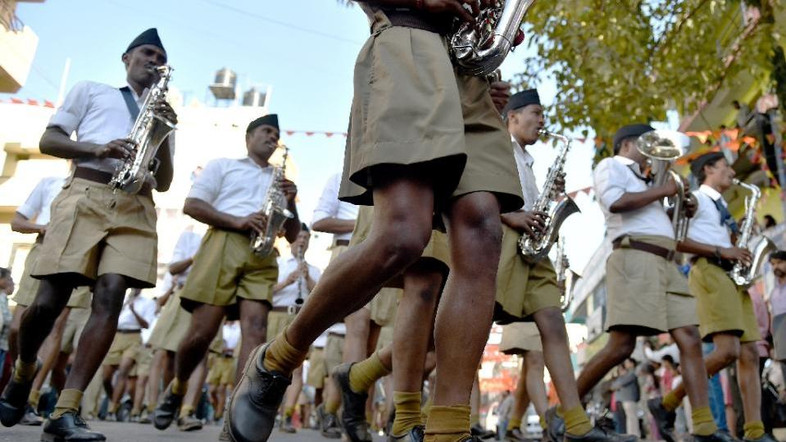
A hardline Indian Hindu movement announced Sunday it was abandoning its trademark khaki shorts to try to modernise the dress code, 91 years after adopting the austere military-style uniform.
Foot soldiers of the Rashtriya Swayamsevak Sangh (RSS) are often seen after dawn across India engaged in physical drills and uttering religious chants -- dressed in pleated shorts, white shirts and black hats.
But RSS general secretary Suresh Bhaiyyaji Joshi acknowledged that the organisation, the ideological fountainhead of Prime Minister Narendra Modi's ruling party, must keep in step with a modern, changing world.
"We have decided to replace khaki half-pants with brown pants. We are not rigid and take decisions according to the times," Joshi told reporters at a three-day meeting of the group's top decision-making body.
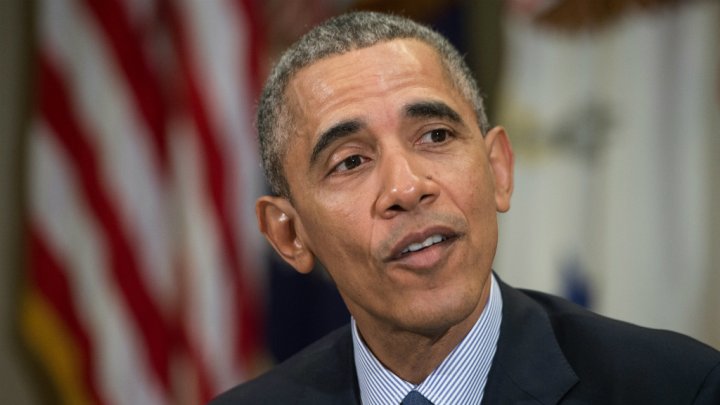
Former French president Nicolas Sarkozy and British Prime Minister David Cameron are partly to blame for the current “mess” in Libya, US President Barack Obama has said in comments likely to upset two of his country’s closest allies. In an extensive interview with The Atlantic magazine published Thursday, President Obama discussed the conditions surrounding the 2011 British and French-led NATO bombing campaign that led to the end of Libyan dictator Muammar Gaddafi’s 41-year-rule.
While the military intervention succeeded in ousting the dictator, the power vacuum it created has seen Libya descend into near-anarchy, ruled by rival militias vying for power while the Islamic State group has gained influence in the country. Obama believes that while deeper than expected Libyan “tribal divisions” are partly to blame, it was largely the failure of France and the UK to “follow-up” on the bombing campaign that led to the current situation. “There's room for criticism because I had more faith in the Europeans, given Libya's proximity, being invested in the follow-up,” he told the magazine.
Sarkozy wanted to ‘trumpet’ own role
Cameron stopped paying attention soon after the military operation, he said, becoming "distracted by a range of other things". Meanwhile, Sarkozy was more interested in promoting the importance of his own role in bringing an end to Gaddafi’s rule, Obama seemed to suggest. “Sarkozy wanted to trumpet the flights he was taking in the air campaign, despite the fact that we had wiped out all the air defences and essentially set up the entire infrastructure [for the intervention],” the US president said.


















